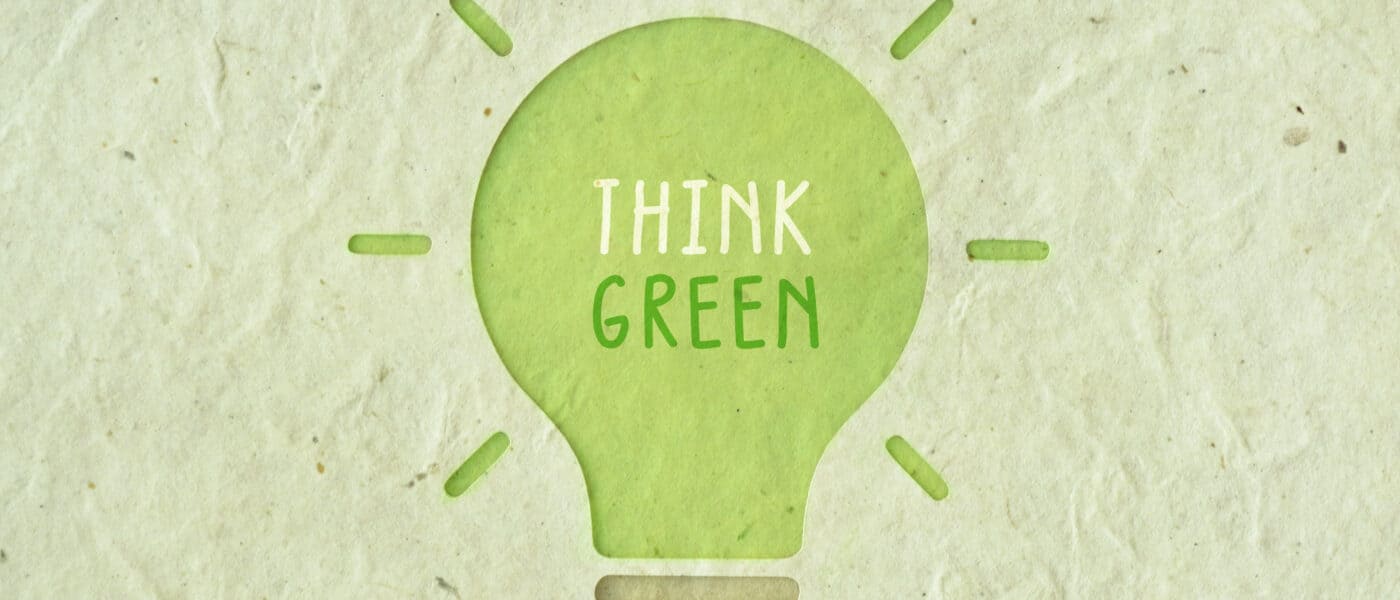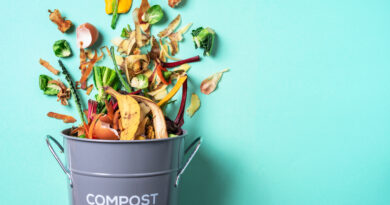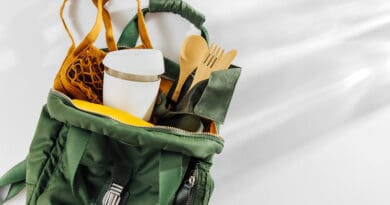The quick start guide to Going Greener: Shrink your footprint today!
Taking steps to reduce our environmental footprint and live more sustainably can involve many aspects of our lives. It has to do with being more conscious of the resources we use, paying closer attention to what we buy, and cutting back on how much we throw away. It challenges us to become more aware of the issues affecting our planet and actively take part in protecting the natural world that supports us. Ultimately, it means learning to keep the Earth in our minds and hearts as we go about our daily lives. This is, after all, the one home we all depend on!
Are you looking for some new ways to make your life greener?
Would you like to find some new ways to reduce your environmental impact and connect with nature? Are you interested in discovering simple swaps and habits that can also save money? If so, the Earth-friendly tips, ideas, and resources below can help you get going in the right direction!
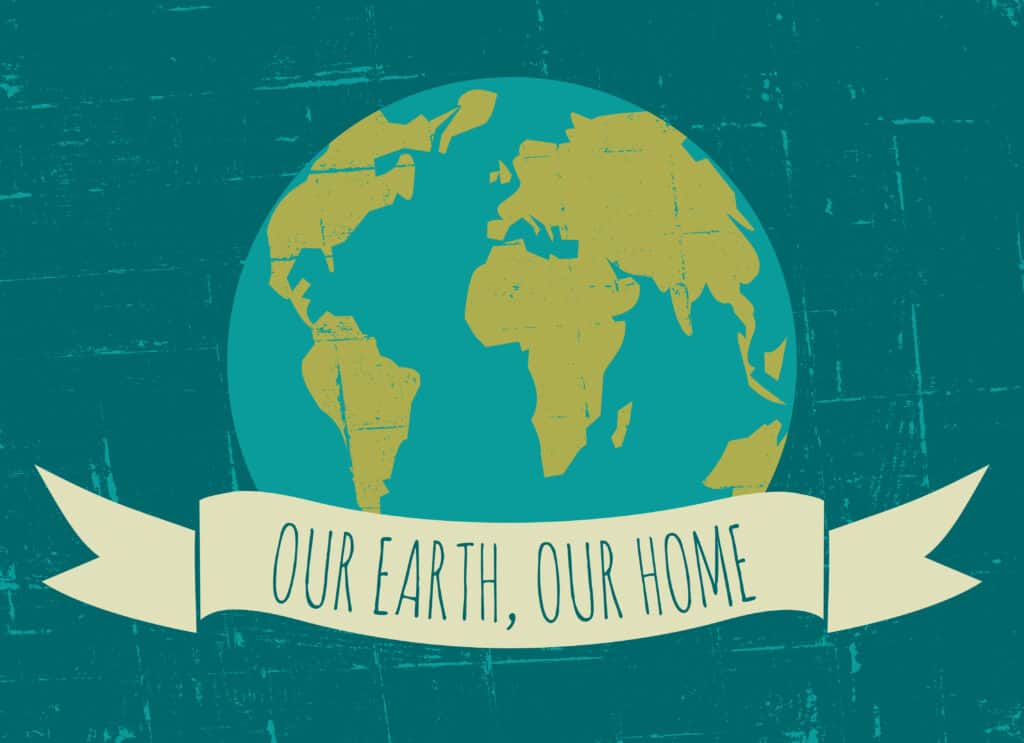
Before you begin…
Adopting a more sustainable lifestyle can be enriching, enlightening, and very fulfilling. But trying to take on too many new things at once can get overwhelming! Depending on where you are along your eco journey, you might find it helpful to pick one or two areas to focus on first and take time to get used to new routines and products before moving on. Remember, every Earth-friendly action you can take – big or small – makes a difference.
The Quick Start Guide to Going Greener
22 Awesome ways to reduce your footprint, protect the Earth, and support nature
1. Bring reusable shopping bags – and produce bags – when you head to the store
It’s no secret that single-use plastic bags are not good for our planet. And the thing is, they can often be easily avoided simply by bringing your own reusable bags when you shop or even skipping a bag altogether. Just this one little habit alone can significantly shrink your overall plastic footprint! Use this Plastic Calculator on Earthday.org to explore your current plastic-use patterns and learn about more Earth-friendly alternatives.
2. Carry a reusable water bottle, cup, or coffee mug while on the go
Dodging single-use cups and bottles while on the go is easy when you have your own with you! Take your eco-routine to the next level by also bringing reusable straws, containers, and utensils when you leave home. Aside from plastic bottles*, most single-use plastics and other disposable products can’t be easily recycled, so they end up in landfills and incinerators… or drifting around in the environment as litter.
*Even though plastic bottles are often recyclable through curbside collection services, the most eco-friendly option is to avoid them as much as possible, along with other single-use plastics and disposable items.

3. Look for low-waste food packaging – plastic-free, if possible!
Take time to consider the packaging that comes with the products you buy. Do certain things create a lot of packaging waste compared to the actual amount of product you are getting? If so, look for more eco-friendly alternatives. Choose plastic-free packaging when possible. Depending on your local shopping options, you might even be able to buy some products package-free using your own containers and bags.
4. Switch to a bamboo toothbrush
When it comes to eco-friendly personal care products, there are lots of great options out there today! Switching to a bamboo toothbrush is one easy way to dodge some extra plastic waste in the dental care department. Plastic-free toothpaste, floss, and mouthwash products are also now available in many stores and online. If you want to make more sustainable swaps in the bathroom, try using shampoo and conditioner bars instead of buying the liquid versions in a bottle. Every plastic handle, tube, and container you can avoid reduces your footprint and helps to protect our planet!

5. Replace disposable plastic in the kitchen with reusable alternatives
Be on the lookout for wasteful plastics in the kitchen. Although it can be easy to fall into a routine of using single-use food storage bags and plastic wraps for short-term uses, they often aren’t really necessary. Just having a few reusable containers, fabric bowl covers, and silicone storage bags on hand usually does the trick! And like so many other eco-swaps, opting for reusables over disposables can also help save money in the long run.
6. Use recycled or “tree-free” tissue products
Did you know that some tissue products are directly linked to the loss of our planet’s precious ancient forests? By choosing 100% recycled or other “tree-free” paper products – including bathroom tissue and paper towels – you can avoid contributing to this major problem and help protect forest ecosystems. Check out the latest Issue with Tissue report* to see how various tissue brands measure up when it comes to their environmental impact. *Published by the NRDC and Stand.earth
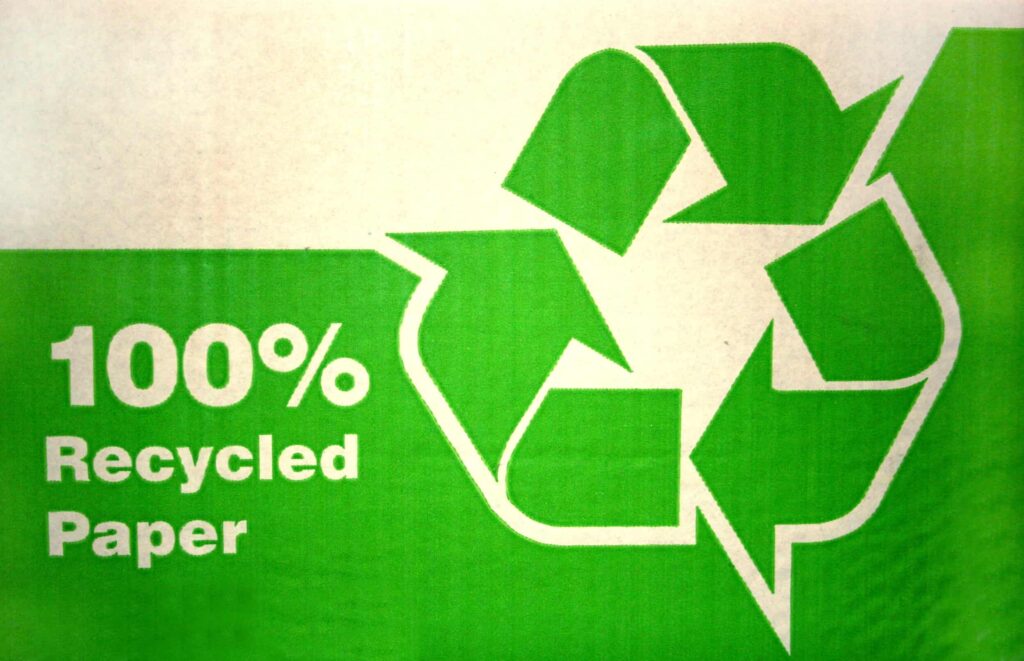
7. Transition to a more natural, Earth-friendly cleaning routine
Many traditional cleaning products on store shelves today contain harsh chemicals that can harm our health and the environment. Once they are washed down the drain, these chemicals can eventually find their way into local lakes and rivers, disrupting aquatic ecosystems. Not to mention, all those containers and spray tops create a lot of extra plastic waste!
Thankfully, there are lots of greener alternatives to choose from in the cleaning department. These products typically contain more natural ingredients, and many extra Earth-conscious brands also offer plastic-free, reusable, or low-waste packaging. For another low-cost option, you can make your own effective cleaners in repurposed jars and spray bottles. Many are very easy to make using just a few basic and clean ingredients like baking soda, castile soap, essential oils, and vinegar. You can find all kinds of easy “recipes” for Make-it-Yourself non-toxic cleaners online, from mirror spray to cleaning scrub.
8. Visit a farmers’ market or local farm
Buying fresh, locally grown produce reduces carbon emissions from transportation and supports smaller-scale – and often more sustainable – farming practices. It’s also a great way to dodge some plastic packaging! LocalHarvest is a helpful online directory for finding the nearest farmers markets, farm stands, u-pick farms, and even restaurants that serve local produce. (U.S. only)
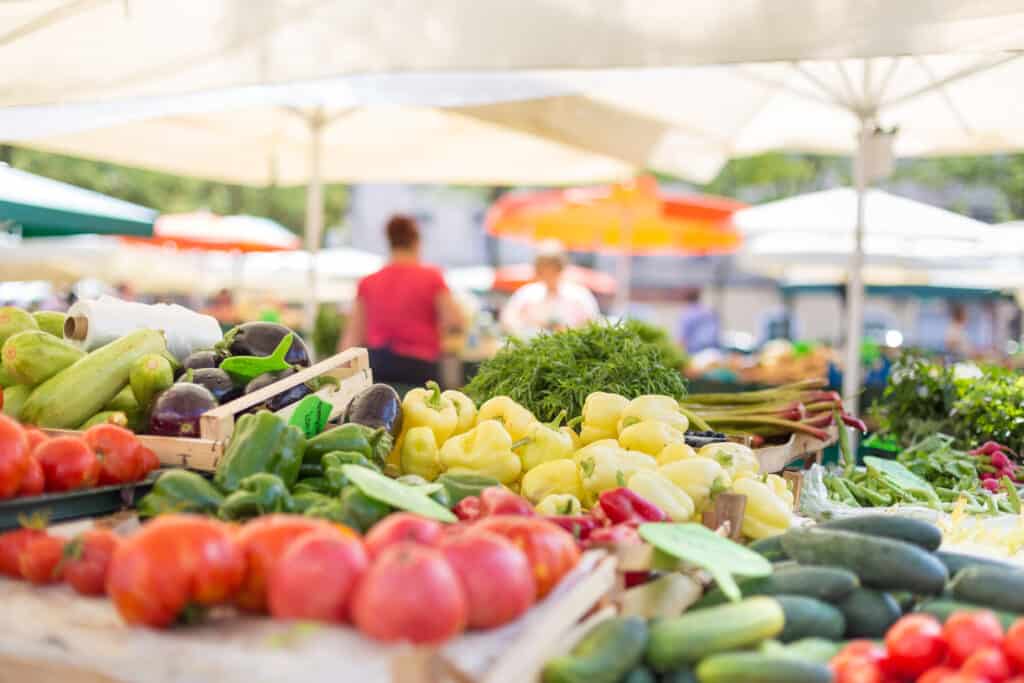
9. Consider buying second-hand the next time you need something
Choosing to buy things that have already been in use – instead of things that are brand new – is another great way to reduce your footprint. By buying “pre-loved” items such as clothing, furniture, books, and toys, you help conserve natural resources, reduce pollution from manufacturing, and prevent items that still have a useful life from ending up in a landfill. And since second-hand items typically cost much less than new ones, shopping this way is also budget-friendly. Not to mention, you never know what unique items you might find!
10. Challenge yourself to find new ways to recycle
Recycling goes way beyond cardboard, paper, and empty cans! Look for ways to recycle other kinds of items instead of just throwing them away when they aren’t needed anymore. A wide range of drop-off and mail-in recycling programs are available for things like lightbulbs, batteries, ink cartridges, electronics, appliances, and old paint. Depending on your location, you might be able to drop off your old jeans and worn athletic shoes for recycling. Many of these programs are free! A visit to your nearest recycling center or a quick online search for how to recycle a specific item can often get you going in the right direction.
Clothes, toys, sports equipment, and other items in good condition can often be resold, donated, or given away to someone who needs them. The more “stuff” we keep in the loop and out of the waste stream, the better for our planet.
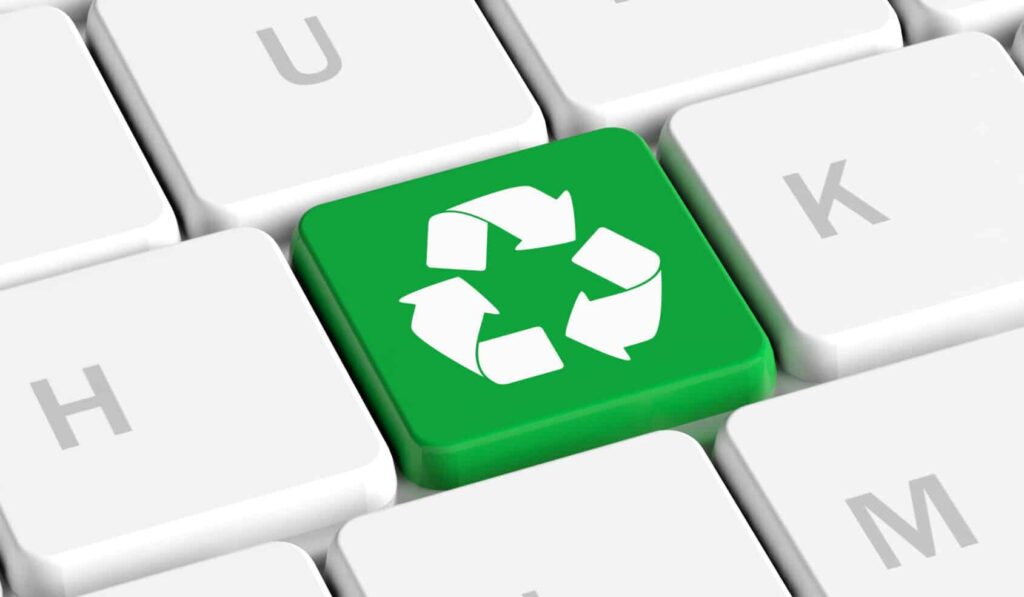
11. Take steps to reduce food waste
According to the U.S. Environmental Protection Agency, over one-third of all food produced in the U.S. is never eaten and goes to waste. All this wasted food takes a huge toll on the environment! When we waste food, we waste all the energy and resources used to grow, make, package, and transport it. The more food we waste, the bigger our footprint when it comes to land use, pollution, and greenhouse gas emissions.
We can each do our part by making an effort to prevent food waste as much as possible, both at home and while dining out. This can include planning meals ahead, buying smaller portions, and storing produce in ways that help keep it fresh longer. Prioritize food in your fridge and pantry that needs to be used up so it doesn’t spoil. And when you have produce and other foods hanging around that you don’t have a plan for yet, try to find creative ways to use them up!
12. Compost your food scraps, yard trimmings, and other organic waste items
Banana peels (along with other organic waste materials) don’t belong trapped in a landfill… Return them to the Earth instead! The super eco-friendly practice of composting can instantly shrink household waste and your carbon footprint. By composting your food scraps and other organics instead of throwing them away, you help reduce the amount of potent greenhouse gas emissions from landfills. Composting also ensures that valuable nutrients from food, yard trimmings, and other organic materials are recycled back into the soil, where they can be used again.
Depending on where you live, you might be able to recycle your food scraps through a compost pickup service or a nearby community composting drop-off site. There are also many popular techniques for composting right at home!
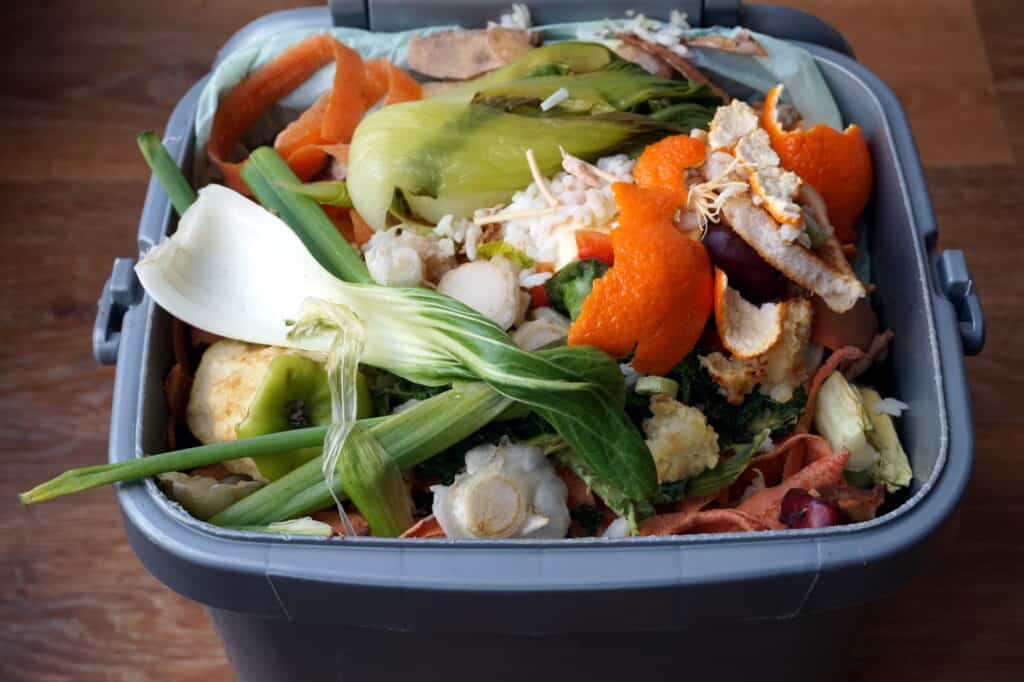
13. Be wise about your water use
Turn off the water while brushing your teeth. Take shorter showers. Try to use less water while washing dishes and hands. You’ve probably heard these water-saving tips many times before, but they can be easy to forget when you’re in the moment. By making small adjustments in your daily routine to conserve water, you reduce the amount of energy needed to treat, pump, and heat it before it reaches the faucet. Conserving water also helps to reduce pollution and protect aquatic ecosystems. And, of course, it can also help lower your water bill!
14. Hang some laundry out to dry
Hanging laundry up to dry (inside or outside) is a great way to save some energy at home. This back-to-basics, eco-friendly routine not only helps shrink your carbon footprint – it also helps to lower your gas or electric bill! Less tumble dryer time means less wear and tear on fabrics, which helps to make clothing last longer. If hanging a clothesline outside isn’t possible, an outdoor weatherproof drying rack can be a great alternative. As an added bonus, air-drying clothes is also a great way to reduce static.
15. Adopt Earth-friendly paper use habits
You can help protect forests, conserve resources, and reduce pollution simply by making a few small changes to your paper-use habits. This can include adjusting your printer settings to print on both sides and saving sheets with an unused side for scrap paper. Buying paper and paper products made from recycled content whenever possible also helps to reduce your environmental footprint. And, of course, be sure to recycle (or compost) paper or cardboard you don’t need anymore!*
*Certain paper products, such as coated paper plates and cups, often can’t be recycled or composted. So, when it comes to reducing landfill waste, the best option is to avoid using these kinds of single-use products in the first place.
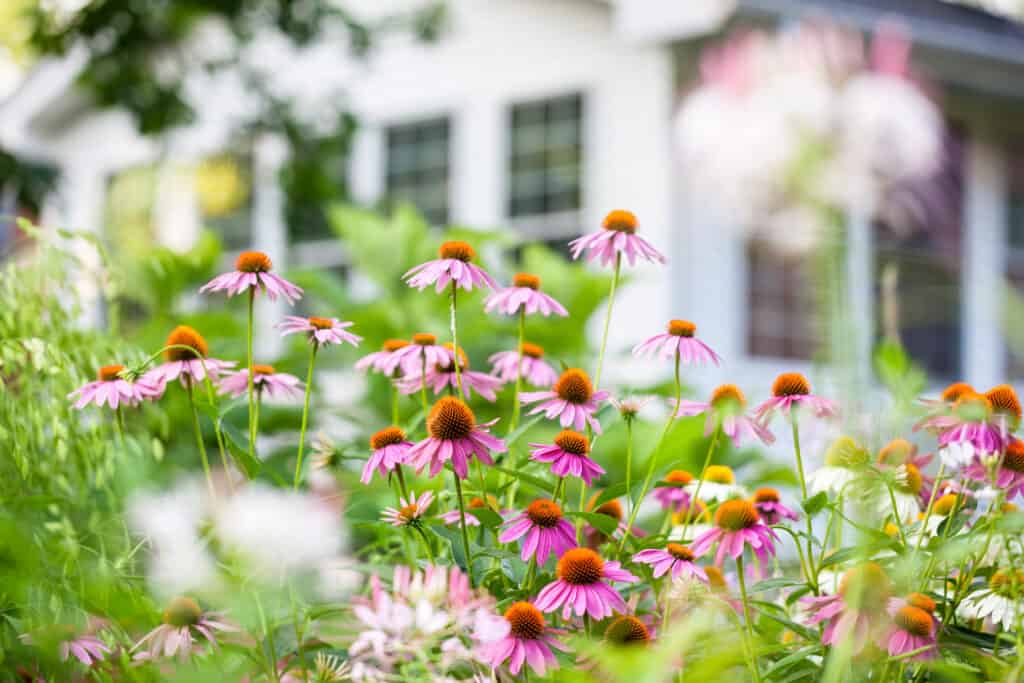
16. Add native plants to your yard
Native plants are always a great choice when gardening and landscaping with nature in mind. Since these plants already have a “place” within the ecosystem of a given local area, they can bring the most benefits when it comes to providing food and shelter for pollinators, birds, and other local wildlife. If you are looking for a yard project that will both add beauty and help nature, consider starting a pollinator garden!
17. Opt for natural lawn and garden care
There are many ways to manage lawns and gardens without the need for chemical pesticides and fertilizers. Natural and organic lawn care practices ensure a safer environment for people, pets, and wildlife and also promote healthy soil and aquatic ecosystems. Chemical-free, naturally-maintained yards that contain less overall lawn area and more native plants also typically need less watering, mowing, and trimming – which saves time, energy, and money.
18. Grow some of your own food
Growing some of your own fruits, vegetables, and herbs has many environmental benefits. For one thing, homegrown produce doesn’t need to travel long distances before it gets to your plate, which saves energy. Fruits, veggies, and herbs you grow and enjoy yourself don’t need any plastic bags, clamshell containers, foam trays, ties, labels, or stickers that often come with store-bought produce, reducing waste. Having a garden is also a great way to connect with nature and the Earth. Not to mention, watching and learning about how different foods grow first-hand can be exciting, eye-opening, and rewarding!
Don’t have a yard or enough space for a full garden? Many fruits, veggies, and herbs can be grown in containers or vertical planters on patios, balconies, and even indoors.
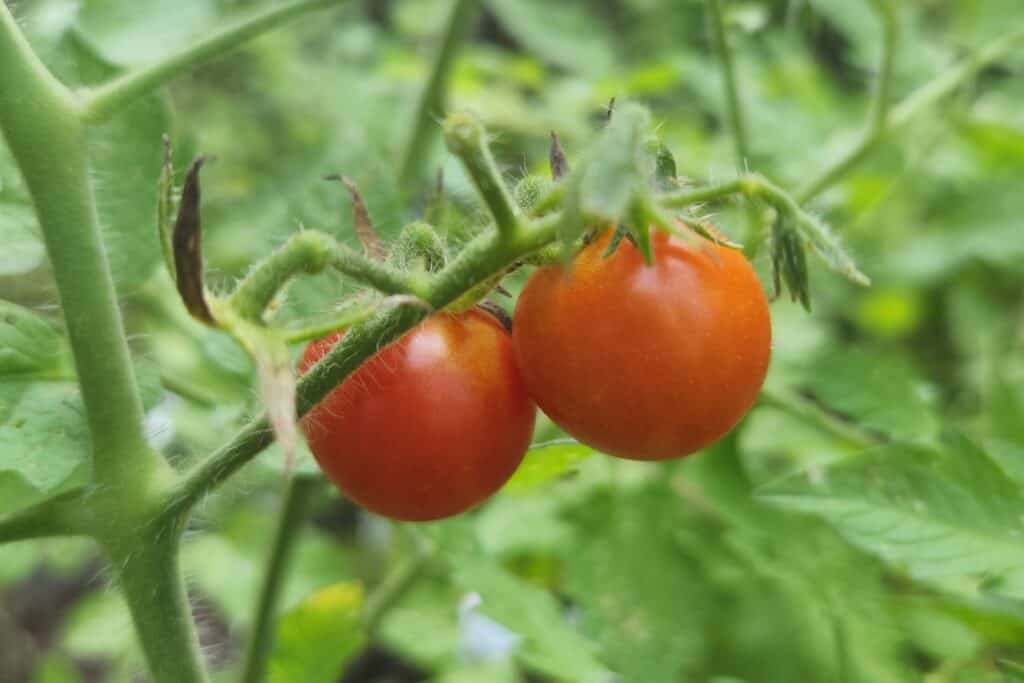
19. Spend more time connecting with nature
Whether you are at a local park, on a forest trail, or even in your own yard, embrace the opportunity to connect with the natural world surrounding you. Take time to explore and learn more about the trees, birds, insects, and other wonders of nature you encounter. Thanks to today’s technology, phone apps can help identify plants and many types of wildlife within seconds. If you don’t already have them, Merlin Bird ID, BirdNET, and iNaturalist are some popular free apps among nature lovers. There are several great apps available for plant and insect identification, too.
20. Help clean up litter
Sadly, a lot of our garbage ends up in the environment… and a significant portion of it is plastic. Litter that starts on land often finds its way into waterways and the ocean, where single-use plastics can be especially hazardous for marine life. Over time, plastic litter often wears down into tiny microplastics through exposure to sunlight and water.
The good news is that you don’t have to wait for an organized Earth Day cleanup event to help! Whether on a walk in your neighborhood, at a park, or on the beach, getting into the regular habit of picking up litter is a quick and easy way to help protect wildlife and reduce pollution. Every little piece you collect counts! If you want to keep track of your progress and share your efforts, there’s an app for that! Check out the Litter CleanUp app and Clean Swell by the Ocean Conservancy.
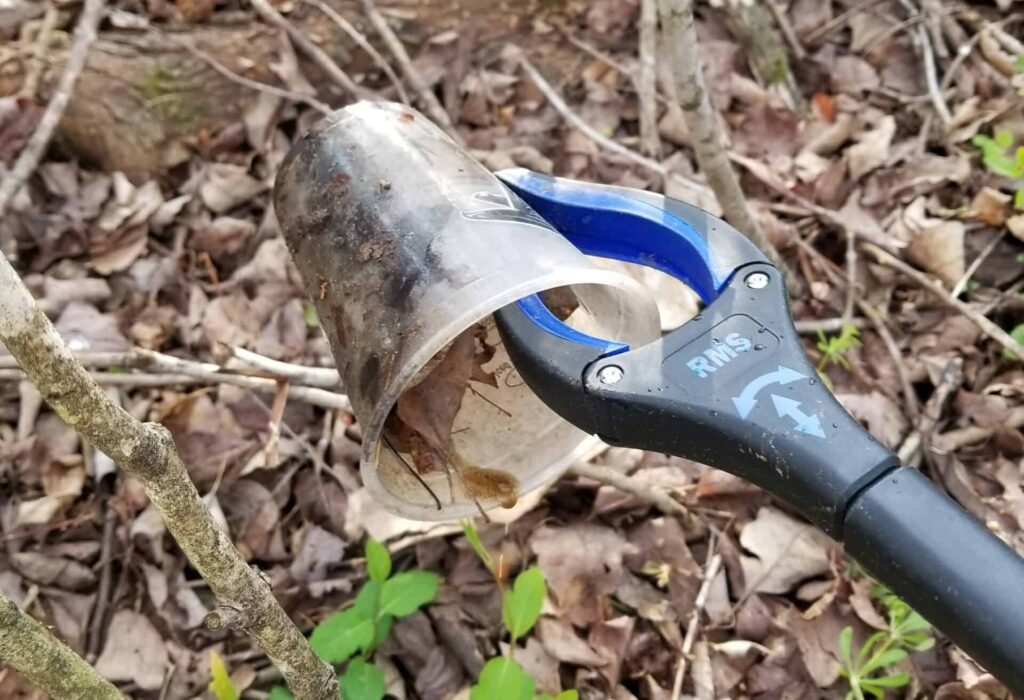
21. Try out a new plant-based meal
Many studies have shown that the foods we choose to eat can significantly affect our overall environmental footprint. While the impact of specific foods within each category can vary depending on where and how they are grown and produced, the overall findings are clear: Plant-based foods, such as grains, nuts, seeds, vegetables, and legumes, generally require less land, use less water and energy, and have lower greenhouse gas emissions compared with animal-based foods.
So, when it comes to food, you can quickly and effectively shrink your footprint simply by incorporating more balanced, plant-based meals and snacks into your routine. If you are new to plant-based cooking and aren’t sure where to begin, there are all kinds of helpful tips and healthy, delicious recipes out there online to help get you started! To learn more about the specific impacts of different food choices, explore WWF’s Planet-Based Diets Impact & Action Calculator.
22. Reduce, reduce, reduce
Reducing is at the heart of sustainable living. Taking steps to reduce our resource use and how much we throw away is essential to reducing our personal impact on the Earth. And a big part of this involves becoming more conscious of what we choose to buy in the first place! Many things, such as single-use plastics and other convenience disposables, can often be avoided altogether – especially while at home. And as for items that we only might need once or on occasion, why not try to borrow or rent them instead of buying our own? Oftentimes, we are tempted to buy more… when we really don’t need it.
So before you buy, consider these questions: Is this something I really need, or can I do without it? How long will this last? Where will this end up when I don’t need it anymore?
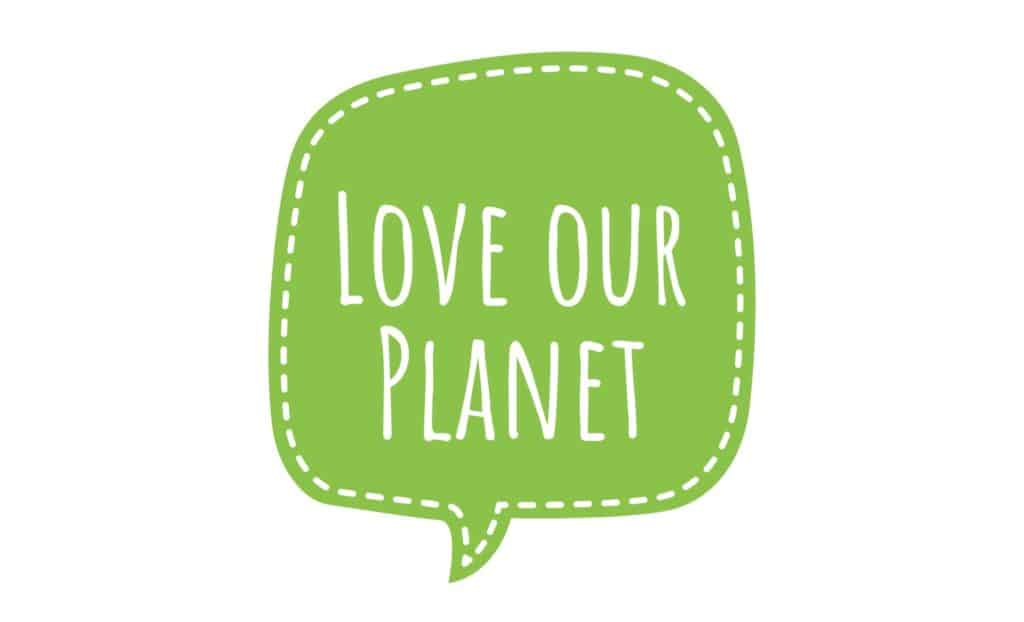
Related Posts:
Skip single-use on the go: Bring these reusables along with you!
Curious about composting? Details, options, and how to get started!
More to explore at Going Greener Today:

